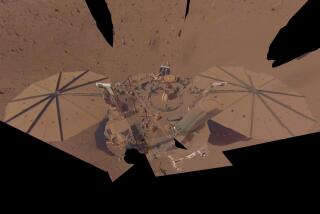Untouched water as old as 2.6 billion years is found: Don’t drink it
Nearly 1.5 miles beneath Earth’s surface, scientists have discovered pockets of water that have remained in isolation for more than a billion years.
What you see in that picture above is probably some of the oldest water on the planet, and scientists say it could be teeming with microscopic life.
The ancient water bubbling up from the floor of a zinc and copper mine near Timmins in Canada’s Ontario province looks crystal clear, but it would not make a cool refreshing drink.
Scientists say it is warm to the touch and much saltier than seawater.
The water is also rich in dissolved hydrogen and methane gas as well as noble gases and their isotopes.
The chemical reactions of the gases could build up enough energy to support life that has been hidden from the sun for more than a billion years, a team of researchers report in a study published in the journal Nature.
Scientists have already found evidence of microbes living in much younger but similarly isolated underground waters in a mine in South Africa.
Barbara Sherwood Lollar, an Earth sciences professor at the University of Toronto and a coauthor on the paper, has been studying the water in the Timmins mine for more than a decade. She suspected it was probably very old, but she had never been able to put a number on it.
Enter a team of British scientists who had developed a way of telling the age of water by measuring how many isotopes of noble gases had built up in it over time.
Using this technique, they concluded that the water is 1 billion to 2.6 billion years old.
“This knocked my socks off,” Sherwood Lollar told the Los Angeles Times. “These are some of the oldest waters that have ever been identified.”
The ancient water was trapped in a network of fractures in granite-like rock that is also billions of years old.
Microscopic amounts of very old water and gas have been found before, but in this mine, the old isolated water was trickling out of the rock at nearly 2 liters per minute.
“If it is as old as 2.6 billion years, it could have been trapped at the same time that the rock formed,” Sherwood Lollar said.
Back then the entire area was covered by ocean waters, and the floor of the mine would have been the ocean floor.
The lead author of the study, Greg Holland of Lancaster University, thinks the discovery of this ancient water, and its potential to support life, could affect the search for other types of life on Earth, and on Mars.
“We have identified a way in which planets can create and preserve an environment friendly to microbial life for billions of years,” he said in a statement. “This is regardless of how inhospitable the surface might be, opening up the possibility of similar environments on the subsurface of Mars.”







